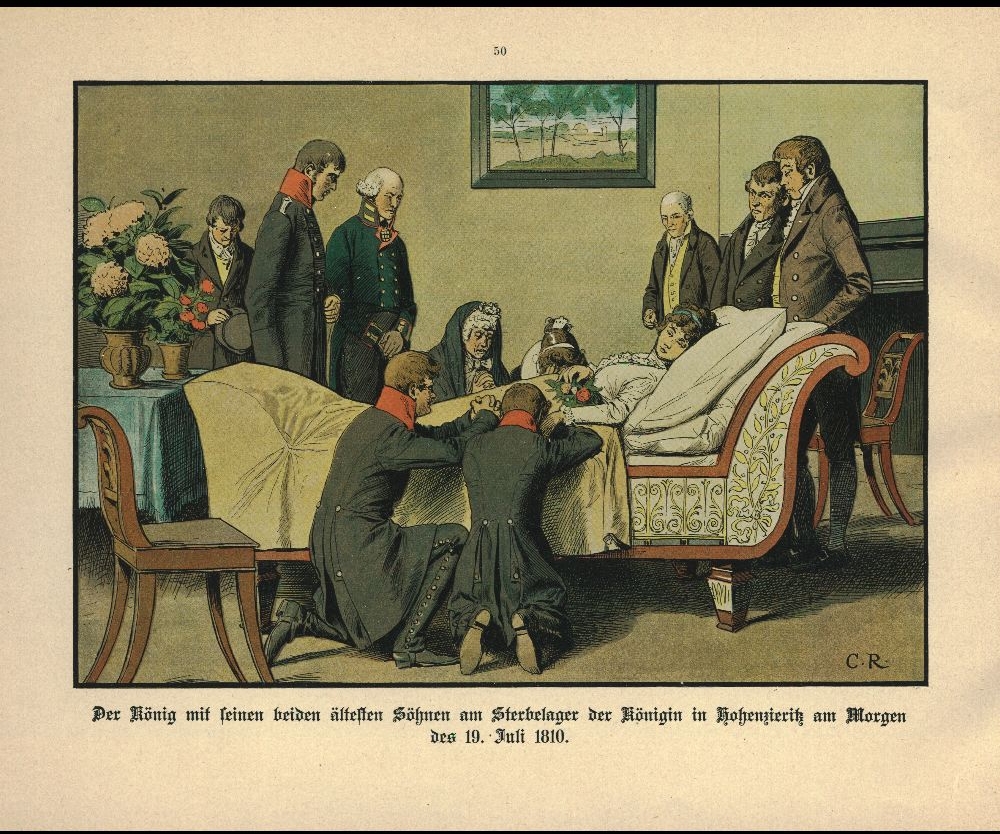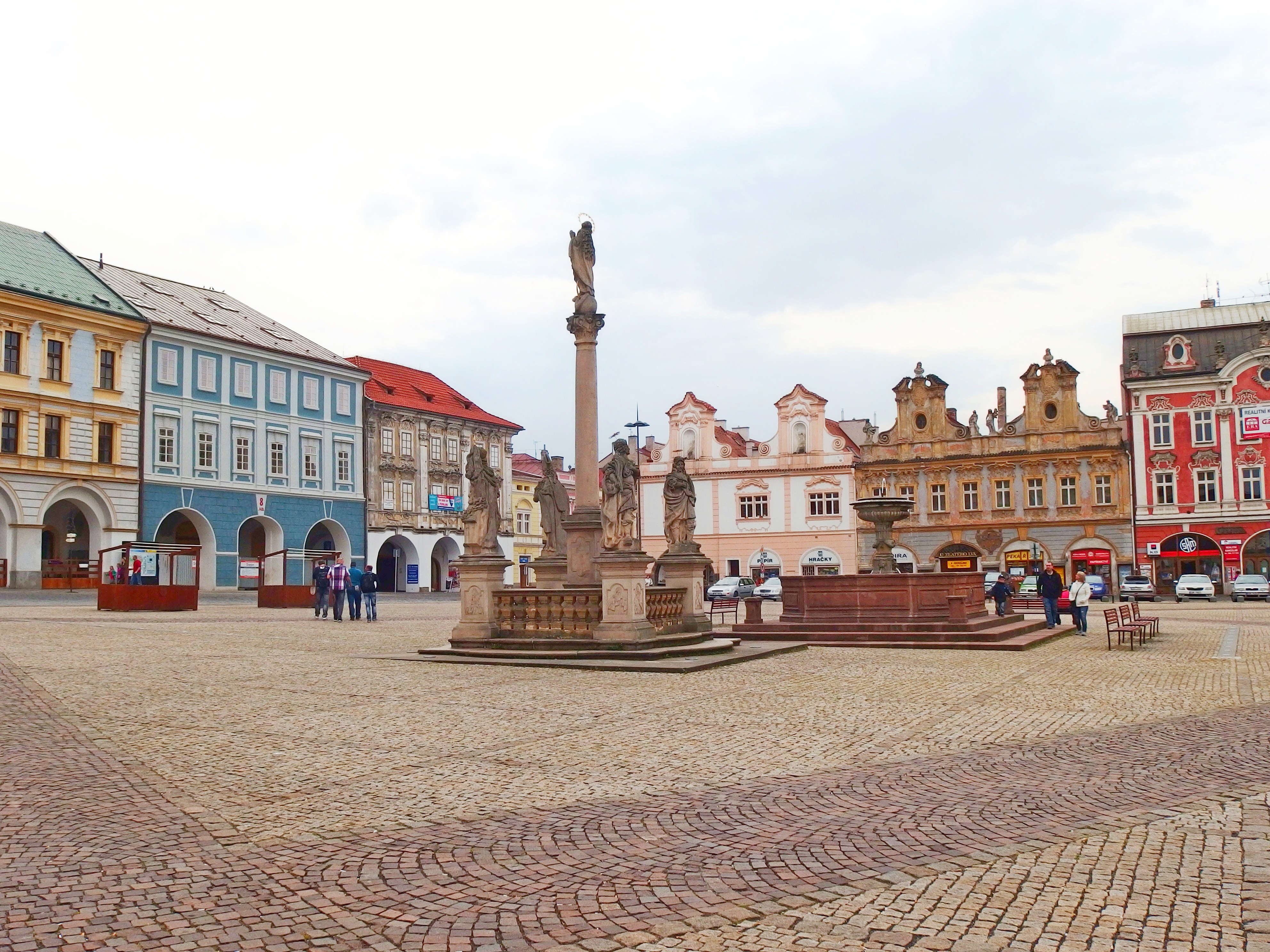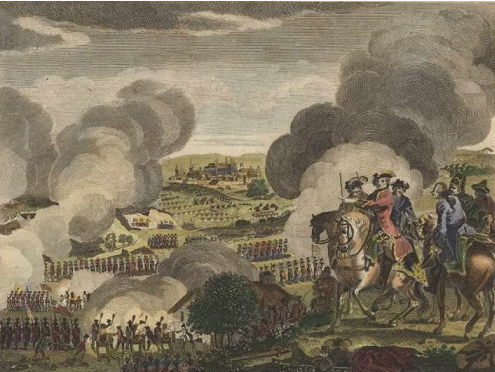|
Battle Of Zorndorf
The Battle of Zorndorf, during the Seven Years' War, was fought on 25 August 1758 between Russian troops commanded by Count William Fermor and a Prussian army commanded by King Frederick the Great. The battle was tactically inconclusive, with both armies holding their ground and claiming victory. The site of the battle was the Prussian village of Zorndorf (now Sarbinowo, Poland). During the battle, Frederick famously took a regimental standard and led an attack himself, rallying his troops. Seven Years' War Although the Seven Years' War was a global conflict, it was particularly intense in the European theater based on the recently concluded War of the Austrian Succession (1740–1748). The 1748 Treaty of Aix-la-Chapelle gave Frederick II of Prussia, known as Frederick the Great, the prosperous province of Silesia as a consequence of the First and Second Silesian Wars. Empress Maria Theresa of Austria had signed the treaty to gain time to rebuild her military force ... [...More Info...] [...Related Items...] OR: [Wikipedia] [Google] [Baidu] |
Carl Röchling
Carl Röchling (October 18, 1855 – May 6, 1920) was a German painter Painting is the practice of applying paint, pigment, color or other medium to a solid surface (called the "matrix" or "support"). The medium is commonly applied to the base with a brush, but other implements, such as knives, sponges, and ... and illustrator known for his representation of historical military themes. Life Röchling was born in Saarbrücken, part of the Prussian Rhine Province, son of Friedrich Röchling, a judiciary worker, and Angelika Stoll. He studied from 1875 to 1880 in the Karlsruhe Academy of Arts ''(Kunstschule)'' with Ludwig des Coudres and Ernst Hildebrand and later in the Prussian Academy of Arts. While in Berlin, he was a pupil of the great master painter Anton von Werner, with whom he participated in the creation of various panoramic paintings such as ''Der Schlacht von Sedan'' ("Battle of Sedan, The Battle of Sedan"). Later he became well known for his indep ... [...More Info...] [...Related Items...] OR: [Wikipedia] [Google] [Baidu] |
Battle Of Hennersdorf
The Battle of Hennersdorf, sometimes referred to as Catholic-Hennersdorf, was a minor encounter that took place on November 23, 1745 in Katholisch-Hennersdorf in Silesia (Prussia, present-day Poland) during the Second Silesian War (part of the War of the Austrian Succession). The Prussians under Frederick II defeated the Austrians under Prince Charles Alexander of Lorraine. The Prussians surprised the Austrians and Saxons in their cantonments in Lusatia Lusatia (german: Lausitz, pl, Łużyce, hsb, Łužica, dsb, Łužyca, cs, Lužice, la, Lusatia, rarely also referred to as Sorbia) is a historical region in Central Europe, split between Germany and Poland. Lusatia stretches from the Bóbr ... with the most success at Hennersdorf. There a force of two regiments of hussars and two regiments of cuirassiers under Zieten attacked a small force of two battalions of Saxon infantry and three regiments of Saxon cavalry. The Saxons, after making a desperate stand, were overwhelm ... [...More Info...] [...Related Items...] OR: [Wikipedia] [Google] [Baidu] |
Lutynia, Środa Śląska County
Lutynia (german: Leuthen) is a village in the administrative district of Gmina Miękinia, within Środa Śląska County, Lower Silesian Voivodeship, in south-western Poland. It lies approximately south-east of Miękinia, east of Środa Śląska, and west of the regional capital Wrocław. The village currently has a population of 1,100. History It is the site of the Battle of Leuthen, where Frederick the Great of Prussia inflicted a heavy defeat on the Austrians on December 5, 1757. Prior to 1945 it was in Germany; it previously belonged to Prussia and earlier to the Austrian Empire The Austrian Empire (german: link=no, Kaiserthum Oesterreich, modern spelling , ) was a Central- Eastern European multinational great power from 1804 to 1867, created by proclamation out of the realms of the Habsburgs. During its existence .... Notes References * * External linksSchool website Lutynia Battlefields in Poland {{ŚrodaŚląska-geo-stub ... [...More Info...] [...Related Items...] OR: [Wikipedia] [Google] [Baidu] |
Battle Of Leuthen
The Battle of Leuthen was fought on 5 December 1757 and involved Frederick the Great's Prussian Army using maneuver warfare and terrain to rout a larger Austrian force completely, which was commanded by Prince Charles of Lorraine and Count Leopold Joseph von Daun. The victory ensured Prussian control of Silesia during the Third Silesian War, which was part of the Seven Years' War. The battle was fought in the town of Leuthen (now Lutynia, Poland), 10 km (6 mi) northwest of Breslau, (now Wrocław, Poland), in Prussian (formerly Austrian) Silesia. By exploiting the training of his troops and his superior knowledge of the terrain, Frederick created a diversion at one end of the battlefield and moved most of his smaller army behind a series of low hillocks. The surprise attack in oblique order on the unsuspecting Austrian flank baffled Prince Charles, who took several hours to realize that the main action was to his left, not his right. Within seven hours ... [...More Info...] [...Related Items...] OR: [Wikipedia] [Google] [Baidu] |
Braunsbedra
Braunsbedra () is a town in the Saalekreis district, in Saxony-Anhalt, Germany. It is situated approximately 11 km southwest of Merseburg. It was created after 1945 by the merger of Braunsdorf and Bedra. The town Braunsbedra consists of Braunsbedra proper and four ''Ortschaften'' (municipal divisions): Frankleben, Großkayna, Krumpa and Roßbach.Hauptsatzung der Stadt Braunsbedra December 2014. Roßbach, famous for the Battle of Rossbach, is one of the local communities; the layout of the land had greatly changed since the battle due to lignite mining and then flooding of the abandoned mines to create the |
Battle Of Rossbach
The Battle of Rossbach took place on 5November 1757 during the Third Silesian War (1756–1763, part of the Seven Years' War) near the village of Rossbach (Roßbach), in the Electorate of Saxony. It is sometimes called the Battle of, or at, Reichardtswerben, after a different nearby town. In this 90-minute battle, Frederick the Great, king of Prussia, defeated an Allied army composed of French forces augmented by a contingent of the Reichsarmee (Imperial Army) of the Holy Roman Empire. The French and Imperial army included 41,110 men, opposing a considerably smaller Prussian force of 22,000. Despite overwhelming odds, Frederick employed rapid movement, a flanking maneuver and oblique order to achieve complete surprise. The Battle of Rossbach marked a turning point in the Seven Years' War, not only for its stunning Prussian victory, but because France refused to send troops against Prussia again and Britain, noting Prussia's military success, increased its financial support ... [...More Info...] [...Related Items...] OR: [Wikipedia] [Google] [Baidu] |
Kolín
Kolín (; german: Kolin, Neu Kolin, Collin) is a town in the Central Bohemian Region of the Czech Republic. It has about 32,000 inhabitants. The town centre is well preserved and is protected by law as an urban monument reservation. Administrative parts Kolín is made up of town parts of Kolín I–VI and of villages of Sendražice, Šťáralka, Štítary and Zibohlavy. Etymology The name Kolín probably comes from the Old Czech verb ''koliti'', i.e. "to hammer poles", and is related to the location of Starý Kolín in the often flooded area at the confluence of Klejnárka and Elbe. The soil in the vicinity of the confluence was strengthened with the help of wooden poles. Geography Kolín lies about east of Prague. It lies in a fertile landscape of the Central Elbe Table lowland. The town is located on the Elbe River. In the eastern part of the municipal territory is Sandberk, an artificial lake created by flooding a sandstone quarry. History Ptolemy's world map mentions B ... [...More Info...] [...Related Items...] OR: [Wikipedia] [Google] [Baidu] |
Battle Of Kolín
The Battle of Kolín on 18 June 1757 saw 54,000 Austrians under Count von Daun defeat 34,000 Prussians under Frederick the Great during the Third Silesian War (Seven Years' War). Prussian attempts to turn the Austrian right flank turned into piecemeal frontal attacks and were defeated in five and a half hours of combat. The Prussians lost 13,700 men, the Austrians 8,100. Frederick gave up the siege of Prague as well as his planned march on Vienna and retreated to Saxony. Daun did not pursue. Background Frederick II of Prussia had won the bloody battle of Prague against Austria on 6 May 1757 and was besieging the city. Austrian Marshal Daun arrived too late to fight, but picked up 16,000 men who escaped from the battle. With this army he slowly moved to relieve Prague. Frederick stopped the bombardment of Prague and maintained the siege under Duke Ferdinand of Brunswick, while the king marched against the Austrians on 13 June along with Prince Moritz of Anhalt-Dessau's troops. ... [...More Info...] [...Related Items...] OR: [Wikipedia] [Google] [Baidu] |
Prague
Prague ( ; cs, Praha ; german: Prag, ; la, Praga) is the capital and largest city in the Czech Republic, and the historical capital of Bohemia. On the Vltava river, Prague is home to about 1.3 million people. The city has a temperate oceanic climate, with relatively warm summers and chilly winters. Prague is a political, cultural, and economic hub of central Europe, with a rich history and Romanesque, Gothic, Renaissance and Baroque architectures. It was the capital of the Kingdom of Bohemia and residence of several Holy Roman Emperors, most notably Charles IV (r. 1346–1378). It was an important city to the Habsburg monarchy and Austro-Hungarian Empire. The city played major roles in the Bohemian and the Protestant Reformations, the Thirty Years' War and in 20th-century history as the capital of Czechoslovakia between the World Wars and the post-war Communist era. Prague is home to a number of well-known cultural attractions, many of which survived ... [...More Info...] [...Related Items...] OR: [Wikipedia] [Google] [Baidu] |
Battle Of Prague (1757)
In the Battle of Prague or ''Battle of Štěrboholy'', fought on 6 May 1757 during the Third Silesian War (Seven Years' War), Frederick the Great's 64,000 Prussians forced 60,000 Austrians to retreat, but having lost 14,300 men, decided he was not strong enough to attack Prague. The battle is mentioned in the famous German ballad '' Lenore'' written in 1773 by Gottfried August Bürger. Prelude After Frederick had forced the surrender of Saxony in the 1756 campaign, he spent the winter devising new plans for a defence of his small kingdom. It was not in his nature, nor in his military strategy, simply to sit back and defend. He began drawing up plans for another bold stroke against Austria. In early spring the Prussian army marched in four columns over the mountain passes separating Saxony and Silesia from Bohemia. The four corps would unite at the Bohemian capital of Prague. Though risky, because it exposed the Prussian army to a defeat in detail, the plan succeeded. After ... [...More Info...] [...Related Items...] OR: [Wikipedia] [Google] [Baidu] |
Pirna
Pirna (; hsb, Pěrno; ) is a town in Saxony, Germany and capital of the administrative district Sächsische Schweiz-Osterzgebirge. The town's population is over 37,000. Pirna is located near Dresden and is an important district town as well as a ''Große Kreisstadt''. Geography Geographical location Pirna is located in the vicinity of the Sandstone Mountains in the upper Elbe valley, where two nearby tributaries, Wesenitz from the north and Gottleuba from the south, flow into the Elbe. It is also called the "gate to the Saxon Switzerland" ( Ger: ''Tor zur Sächsischen Schweiz''). The Saxon wine region ( Ger: ''Sächsische Weinstraße''), which was established in 1992, stretches from Pirna via Pillnitz, Dresden, and Meissen to Diesbar-Seußlitz. Neighboring municipalities Pirna is located southeast of Dresden. Neighboring municipalities are Bad Gottleuba-Berggießhübel (town), Bahretal, Dohma, Dohna (town), Dürrröhrsdorf-Dittersbach, Heidenau (town), Kö ... [...More Info...] [...Related Items...] OR: [Wikipedia] [Google] [Baidu] |
Siege Of Pirna
The siege of Pirna (or Investment of Pirna) took place in 1756 as part of the Prussian invasion of Saxony during the Third Silesian War (part of the Seven Years' War). Following the occupation of the capital Dresden by Frederick the Great on 9 September the Saxon army had withdrawn south and taken up position at the fortress of Pirna under Frederick von Rutowski. The Saxons hoped to receive relief from the Austrian army which was across the border in neighbouring Bohemia under Marshal Browne. Following the Battle of Lobositz the Austrians withdrew, and tried to approach Pirna by a different route but they failed to make contact with the defenders. Despite a Saxon attempt to escape by crossing the River Elbe, it soon became apparent that their position was hopeless. On 14 October Rutowski concluded a capitulation with Frederick. In total 18,000 troops surrendered. They were swiftly and forcibly incorporated into the Prussian forces, an act which caused widespread protest ... [...More Info...] [...Related Items...] OR: [Wikipedia] [Google] [Baidu] |







_021.jpg)